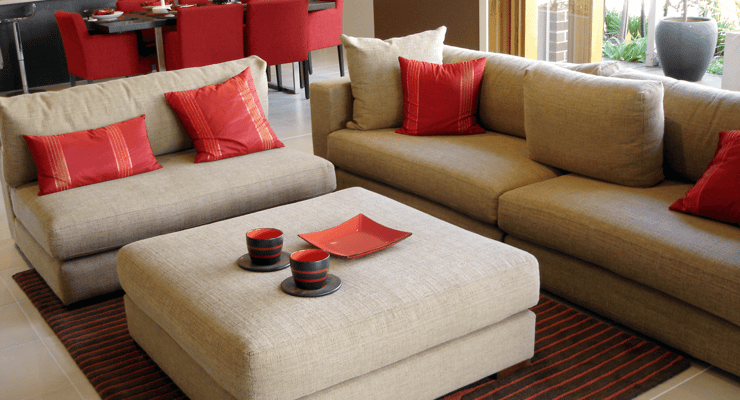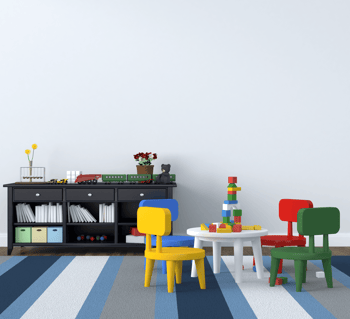 Finding an area rug that will properly balance, support, and complement a living space in your home is well worth the search. That being said, there are a few vital considerations you should know about before you rush out to buy the first fancy floor piece that catches your eye.
Finding an area rug that will properly balance, support, and complement a living space in your home is well worth the search. That being said, there are a few vital considerations you should know about before you rush out to buy the first fancy floor piece that catches your eye.
The tips listed below will help keep you on track when choosing an area rug for your home.
1. Choose A Rug As A Centrepiece
While many people think of rugs as accessories, they can also form the base of a stunning home area. Some designers actually recommend purchasing the rug before anything else in a space, as rugs tend to be more restrictive in terms of design, shading, and budgetary considerations.
If you want an area rug to express the essence of a room, consider starting with the rug pattern and then branch out to the fabrics, furniture, and wallpaper, so that they all link back to your rug.
 2. Make Sure Your Rug Is Family Safe
2. Make Sure Your Rug Is Family Safe
Since kids and pets can quickly wear out an area rug, it's important to consider what colours and especially what material to buy if you have a family. You always want to consider your lifestyle first and foremost before selecting an area rug.
So if you do have pets and/or children, try looking for a darker-shaded rug made of wool that's easy to clean and can conceal dirt, spots, hair, and splatters.
3. Consider The Rug's Size In Relation To Your Furniture
Some designers recommend getting an area rug that's just a bit smaller than the space where your furnishings are placed. It ought to be sizeable enough to properly anchor the specific area, but there should still be some uncovered floor space around the outer edge of your furniture to allow the area to "breathe".
The area rug's size should ideally be determined by your furniture scheme. Placing just the front legs of your couches or chairs on the rug is a popular and visually pleasing setup.
4. Use A Bold Rug To Liven Up A Space
Neutral-toned wall surfaces and furniture get a splash of life from a strikingly-coloured area rug. This can be a great way to make a room more vibrant without having to buy boldly coloured furniture or curtains.
It makes an area warmer and may be used to delineate certain areas within a bigger room, like having a sitting area offset with a vivid area rug in a large playroom.
5. Don't Cover The Whole Floor
When you include a big area rug in a room, you should definitely let some of the floor space around the perimeter of the room stay bare–ideally around nine inches or so from your wall's baseboard. To show off the flooring beneath a large area rug and create a border, consider deducting as much as 12 inches from your baseboards.
 6. Keep Your Rug Secure
6. Keep Your Rug Secure
Area rugs add flair and comfort to any kind of space, whether the flooring is rough, smooth, tile, hardwood, or any other type of material. The trick is to place a skid-free rug pad beneath them to make sure they don't slide around.
Get a rug pad that's a couple of inches smaller than your rug, one that won't stick out beneath it and will let the rug's edges sit flat.
7. Try The Layered Technique
A bold new craze is layering area rugs, which lets you include several different colours and materials. The key is to make sure the layered rugs harmonize with each other and link back to your furnishings. You can create the layered effect by simply letting your base rug stick out from beneath your top rug.
8. Add Some Warmth And Tranquility To Your Bedroom
Putting a neutral-coloured rug underneath your bed will take the glare off of vibrant comforters and curtains and help to create a sense of solace. In addition, placing a rug beneath your bed will keep your feet warm when you go to hop out of it.
9. Place A Silk Rug In Sunny Rooms
Putting a silk rug in sunny areas like dining and living rooms creates an evolving work of art on your floor. The sun's rays will strike your rug at various angles throughout the day, allowing the silk to reflect the sunlight in a variety of stunning patterns.
The suggestions above are just a few general techniques for picking out and laying down area rugs in your home. By keeping them in mind, you can take a lot of the guesswork out of choosing an appropriate rug and avoid purchasing one that doesn't blend well with your décor.





